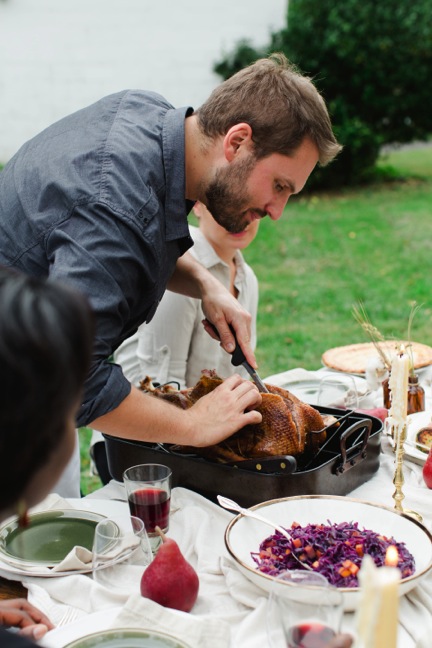Bourbon Trail
/by Susan Able, EdibleDC Publisher

A highlight of a holiday trip home to southern Indiana was a daytrip down to Kentucky to hop on the Bourbon Trail.
Over 95% of all bourbon is produced in Kentucky, where the geology creates water sources that are filtered through limestone, which is uniquely suited to bourbon making. And while all bourbon is whiskey, not all whiskey is bourbon. Bourbon is defined as being produced in the U.S. and made from corn, well at least 51%. Most of the distilleries use local corn, often from only a few sources. Woodford Reserve proudly told us that all their corn came from one farmer in Shelby County, KY and that it was “non-GMO.” Good for them, Woodford is owned by Brown Forman, a corporation that has made its fortune in tobacco, so apparently non-GMO corn for their bourbon is a step in the right direction.
Bourbon is also made in new American oak barrels that are charred. The barrels are not reused, well, at least for bourbon. They are now in high demand by beer makers and wine makers, and often shipped to Europe from Kentucky to sherry and port makers to use. There are also guidelines on it’s proof—it is distilled to no more than 160 proof, entered into the barrel for aging at 125 proof (so they add water to get it there), and bottled at 80 proof.
We started in Frankfort, KY at Buffalo Trace—which makes several premium brands, including the lauded Pappy Van Winkle. It is one of the oldest distilleries in KY and the warehouses date back to the 1800s. It was amazing how unautomated the process of bourbon making was—it still is a low tech process that largely involves getting the product right for its long rest until bottling, rolling the barrels by hand into place for aging, and labeling, bottling and packing by hand. Clearly, the demand for bourbon has gone sky high, but there is only so much bourbon to be had—because the aging process is what it is—no bourbon before its time. We inquired about the Pappy Van Winkle heist which happened at Buffalo Trace (read about it here), which is still unsolved.
After a great short tour that started with a little movie about bourbon and Kentucky, we got to taste a few products and a bourbon ball, a chocolate covered, bourbon-soaked confection that we all love from that part of the country. Then it was off to Woodward Reserve, with a drive through horse country to Versailles, KY and a visiting room that was more like Napa Valley than anything, with a gift shop, small café, endless fireplace, large tasting room and a well-organized tour to the distillery, warehouse and bottling shop. While the distillery is old, Woodford Reserve is a new brand created when Brown Forman acquired the distillery. Aged only to 9 years, with a climate-controlled warehouse to encourage faster aging, Woodford has quickly climbed the ranks with a quality product and a lot of marketing money. They plan to expand as quickly as they can build new warehouses—again, bourbon needs a place to rest for close to a decade before it becomes a higher rank player. But even at Woodford, with stunning solid copper distilling pots custom made in Scotland and cedar fermenting tanks for the mash—it still is a hands on operation run by a master distiller and a team—and after the barrels are filled they are still rolled to the warehouse on tracks that were put in around 1930. Which even with today’s technology seems the best way to get a 500 lb. barrel down a hill.
We ended up our day in Bardstown, the Bourbon Capital of the U.S. It’s a great small town, worth a visit on its own, but the day called us to Willet Distillery, maker of Willet (of course) and a couple of our other favorites, Rowan’s Creek and Noah’s Mill, two smaller batch bourbons. So much more to see, but next time for us, which will include a visit to Whiskey Row in Louisville on the "urban" Bourbon Trail.
Highly recommended—what’s better than sipping some bourbon, learning about a truly American craft industry and driving through bluegrass horse country munching on a bourbon ball? Oh yes, the gift shops sell those too.























